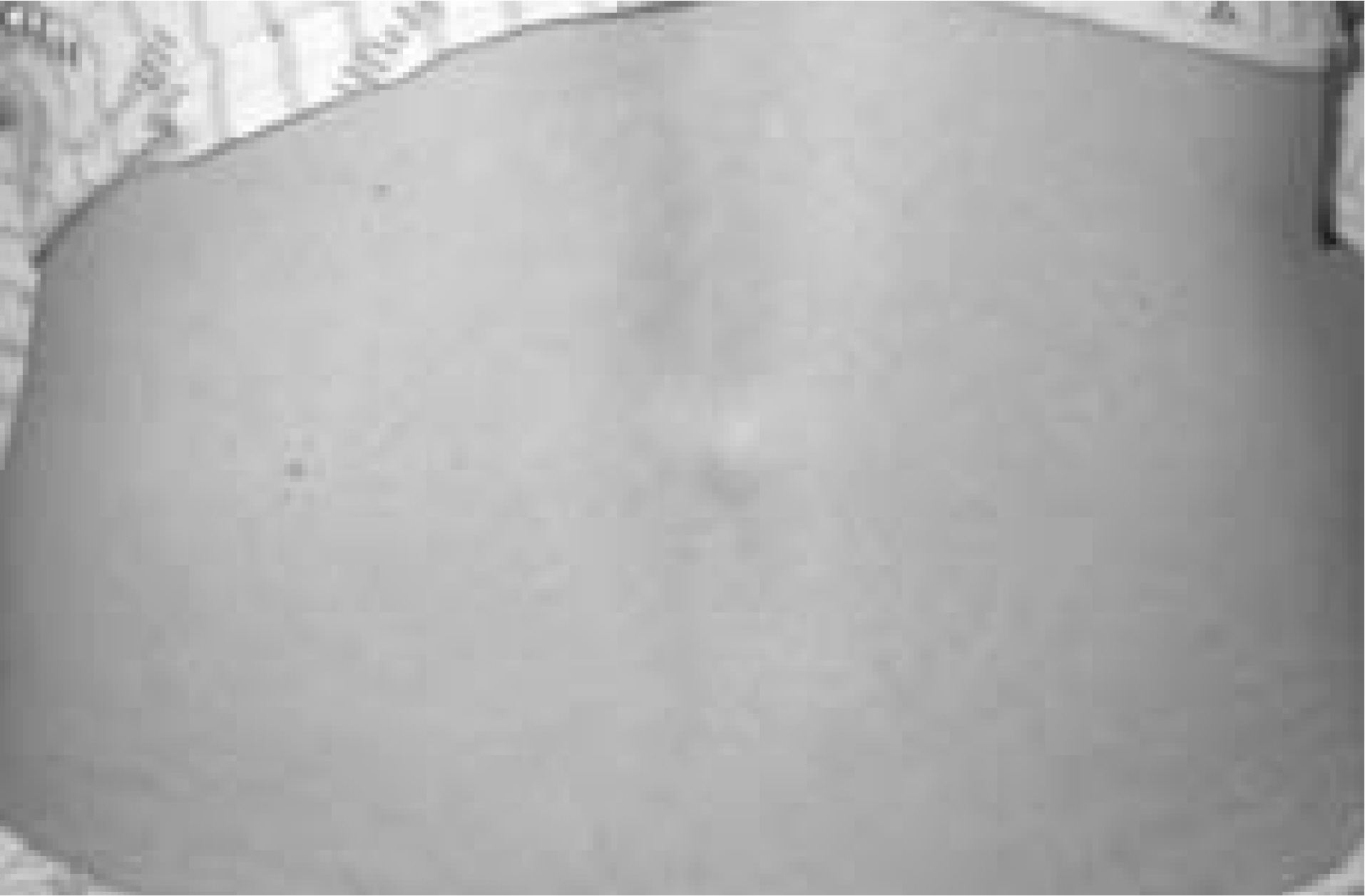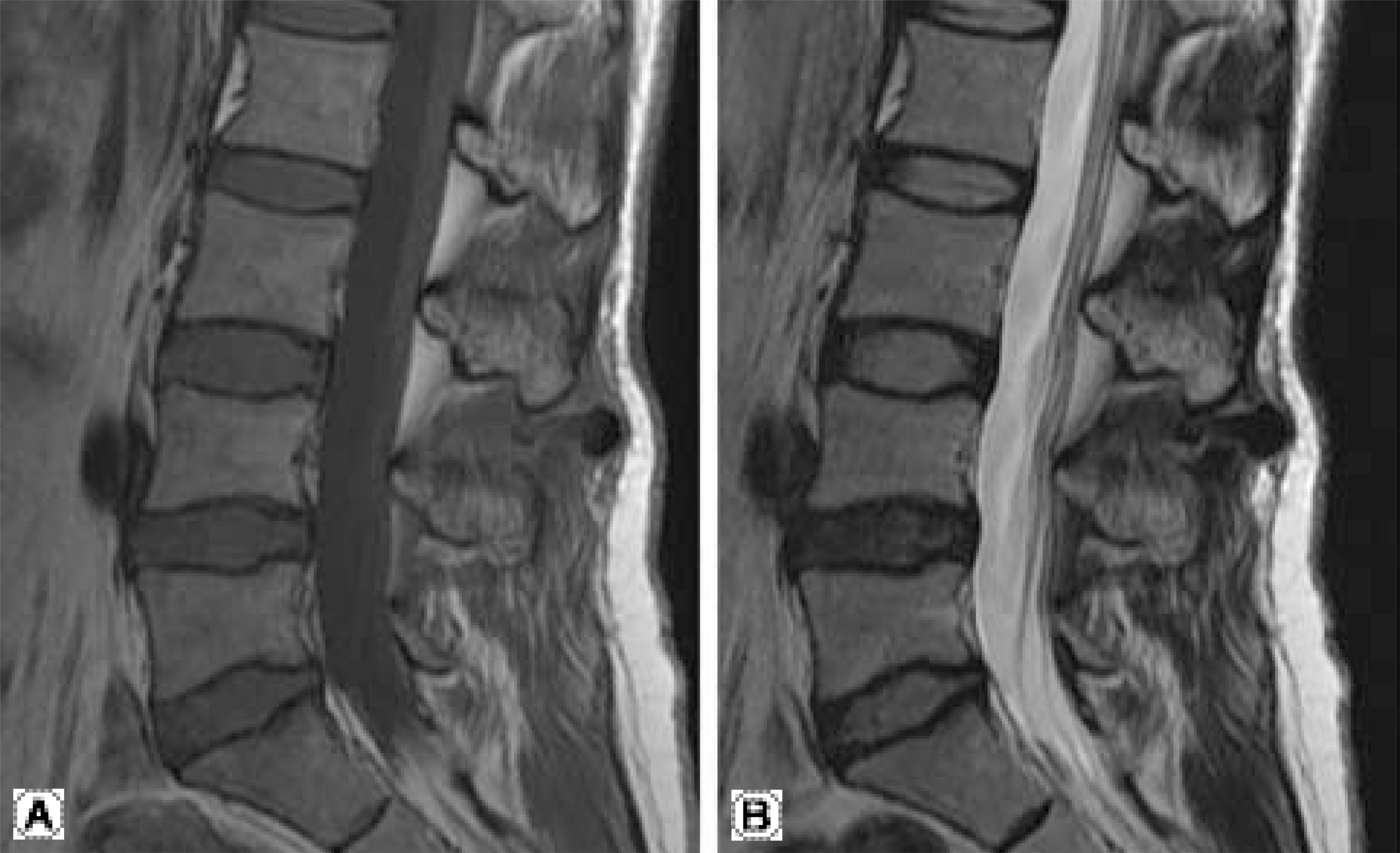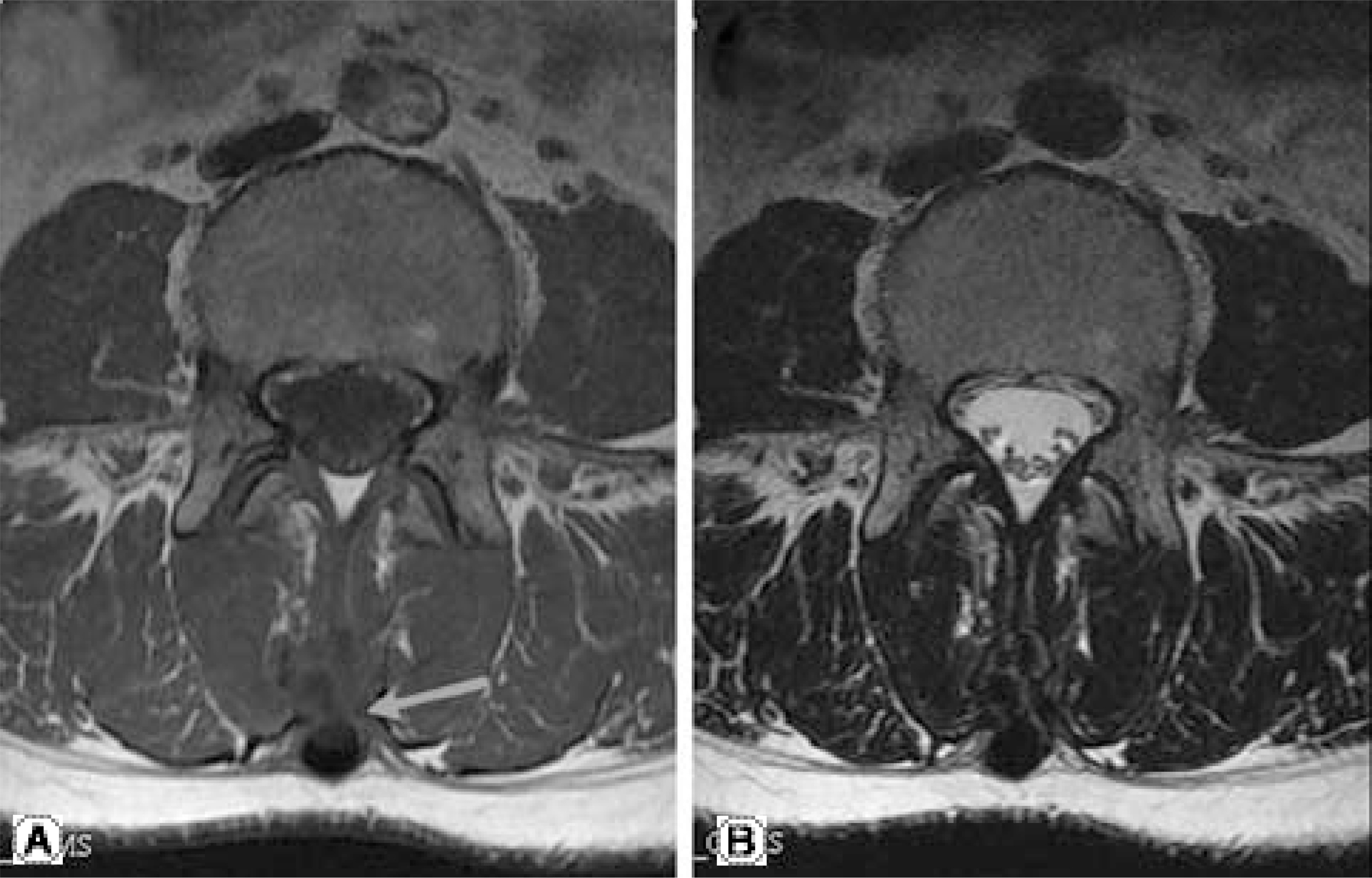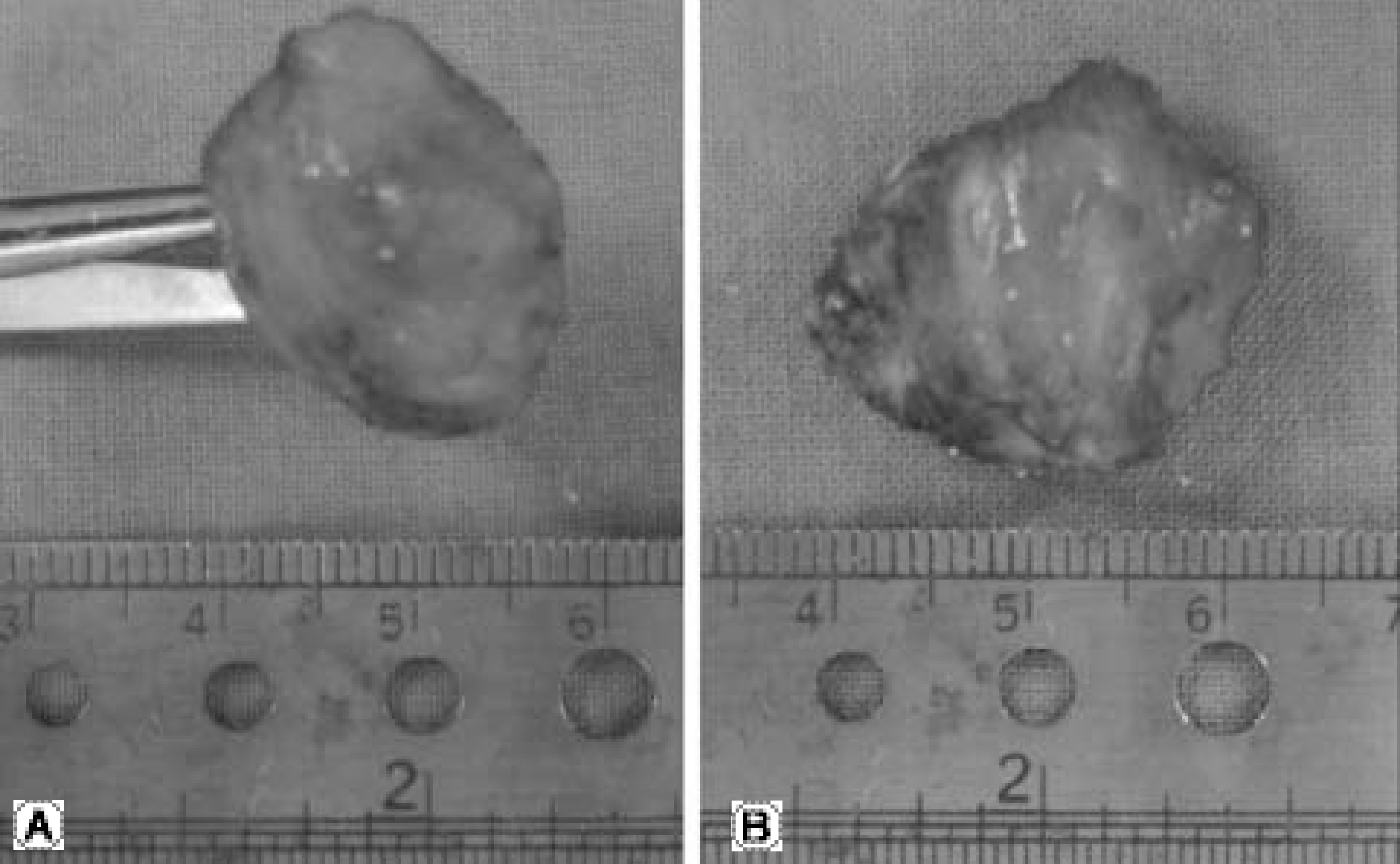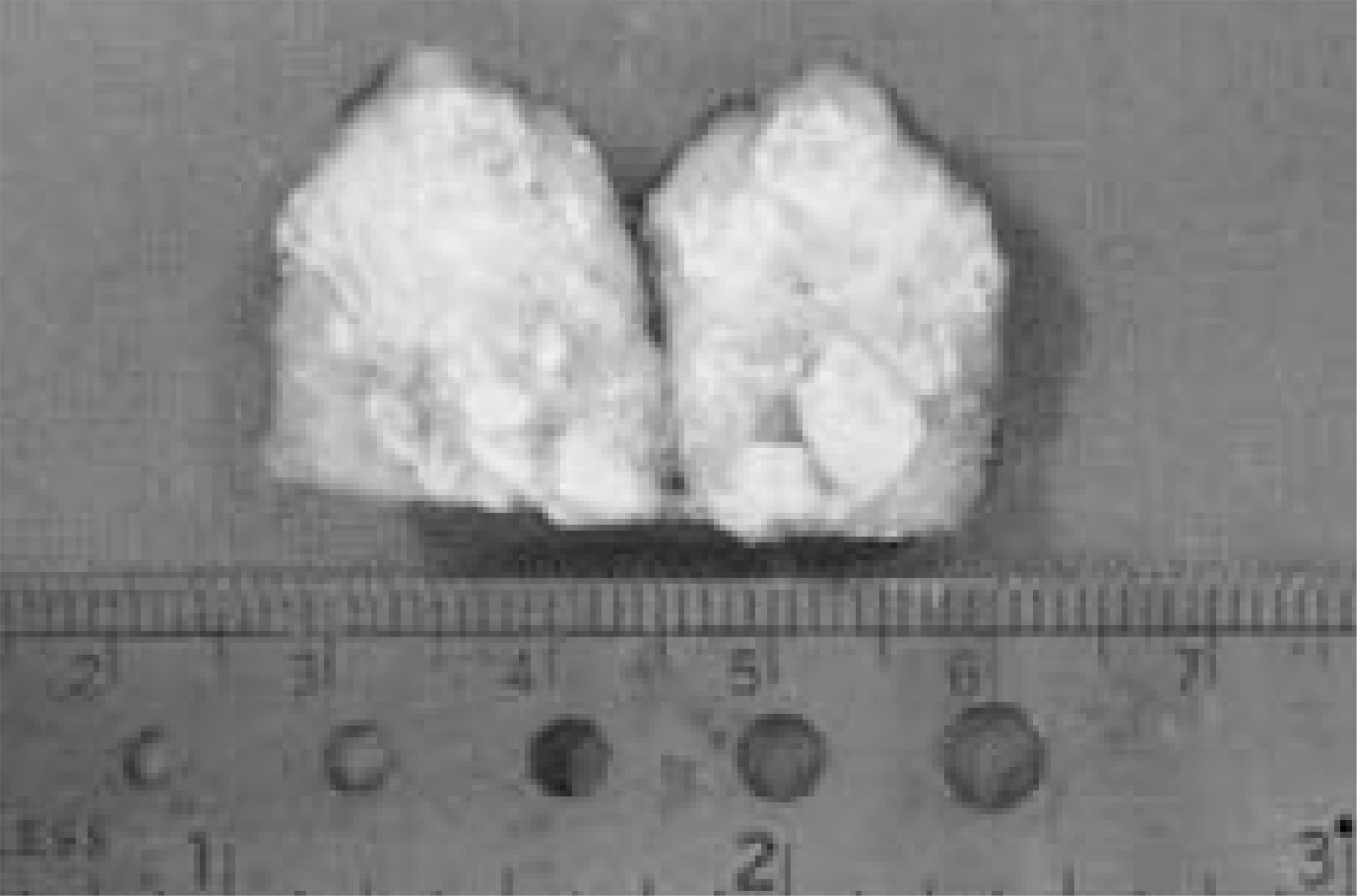J Korean Soc Spine Surg.
2007 Sep;14(3):207-211. 10.4184/jkss.2007.14.3.207.
Tumoral Calcinosis at Lumbar Region: A Case Report
- Affiliations
-
- 1Department of Orthopaedic Surgery, Hanyang University College of Medicine, Seoul, Korea. cnkang65@hanyang.ac.kr
- 2Department of Orthopaedic Surgery, Guri Hospital, Hanyang University College of Medicine, Guri, Korea.
- KMID: 1941655
- DOI: http://doi.org/10.4184/jkss.2007.14.3.207
Abstract
- Tumoral calcinosis is a rare disease involving the ectopic calcifications in the major juxtaarticular sites that was first described by Inclan Alberto in 1943. The etiology of tumoral calcinosis is still obscure. A disturbance of the phosphate metabolism in the kidney has been considered a major cause. However, some patients have no laboratory abnormalities. Tumoral calcinosis in the spine has not been reported in Korea. Recently, we encountered a case of tumoral calcinosis in the lumbar region. The clinical and pathological findings are discussed with a review of the relevant literature.
Keyword
Figure
Reference
-
1). Inclan A, Leon P, Camezo MG. Tumoral calcinosis. J.A.M.A. 1943; 121:490–495.
Article2). Mitnick PD, Goldfarb S, Slatopolsky E, Lemann J Jr, Gray RW, Agus ZS. Calcium and phosphate metabolism in tumoral calcinosis. Ann Intern Med. 1980; 92:482–487.
Article3). Harkness JW, Perters HS. Tumoral calcinosis. A report 6 cases. J Bone and Joint Surg Am. 1967; 49:721–731.4). Thomson JEM, Tanner FH. Tumoral calcinosis. J Bone and Joint Surg Am. 1949; 31:132–140.
Article5). Baldursson H, Evans EB, Dodge W, Jackson T. Tumoral calcinosis with hyperphosphatemia. J Bone and Joint Surg. 1969; 51A:960–964.
Article6). Lever WF, Schaumberg-Lever G. Histopathology of the skin. 6 th ed. Philadelphia: JB Lippincott Co;420. 1983.7). Duret MH. Tumeurs multiples et singulieres des bourse sereuses. Bulletin de la Societe Anatomique de Paris. 1899; 74:725–731.8). Teutschlaender O. Lipid calcinosis. Zieglers Beitr. 1947; 110:402–405.9). Lafferty FW, Reynold ES, Peason OH. Tumoral calcinosis. Am J Med. 1965; 38:105–118.
Article10). Kirk TS, Simon MA. Tumoral calcinosis. Report of a case with successful medical management. J Bone and Joint Surg Am. 1981; 63:1167–1169.
Article11. Durant DM, Riley LH 3 rd, Burger PC, McCarthy EF. Tumoral calcinosis of the spine. A study of 21 cases. Spine. 2001; 26:1673–1679.

